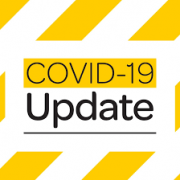Recently WorkSafe announced that it will ‘typically only investigate bullying and harassment claims where there is diagnosis of serious mental harm’.
This significantly limits the complaints they will investigate. Although the clear acknowledgement of this is new, it is consistent with WorkSafe’s actions to date.
WorkSafe has never prosecuted anyone for bullying, despite receiving over 100 complaints of bullying in the past 4 years. Of those complaints, only 9 were investigated. WorkSafe receives over 10,000 notifications a year, and they only have the resources to investigate the most serious incidents, primarily those that result in serious physical harm.
Radio NZ recently reported on allegations of bullying at the Bay of Plenty DHBs’ Tauranga Hospital. Two Hospital staff, who were at times suicidal after feeling bullied at the DHB, had their cases turned down for investigation by WorkSafe. This demonstrates just how serious the harm must be before WorkSafe will investigate.
This does not mean employer’s are off the hook. The path to seeking some form of recompense is frequently taken by raising a personal grievance.
A recent case, FGH v RST, was heard in the Employment Court. The employee was being performance managed, and during that process accused her manager of bullying her. The organisation chose not to investigate the complaint, concluding the employee was simply resistant to being performance managed. The Court criticised this approach, concluding that although the behaviour complained of was ultimately found not to be bullying, the employer had an obligation to investigate the concerns raised rather than dismiss it out of hand.
Bullying investigations are often complex, particularly as bullying behaviour is frequently underhand and out of sight of witnesses. Getting the basics right is a good start.
All of the information you gather has to be provided to the alleged bully. Only in extreme circumstances can information be anonymous. Case law consistently rules a person is entitled to know who is making allegations against them. The alleged bully then needs to be provided adequate time to consider the information before responding to it, and they are entitled to have a support person or representative with them.
Other issues include having one person’s word against the other and no witnesses, witnesses unwilling to provide statements out of fear, imbalances of power between a complainant and the accused, seemingly small incidents that separately are minor but collectively paint a different picture.
Bullying is a health and safety issue, and irrespective of the lack of action WorkSafe is likely to take, if you don’t take action it can adversely affect attendance, productivity, culture, employee retention, and ultimately result in a personal grievance.
If you have any issues at your workplace that concern you, please talk to one of our trained consultants for advice before embarking on an investigation process. We offer 10 minute free advice for any new enquiry.









